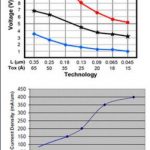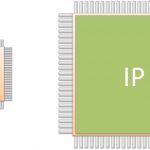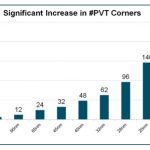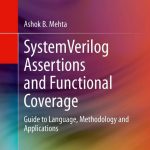You are currently viewing SemiWiki as a guest which gives you limited access to the site. To view blog comments and experience other SemiWiki features you must be a registered member. Registration is fast, simple, and absolutely free so please,
join our community today!
Harish Aepalais part of the Design Closure Methodology group at LSIand he recently talked about his ASIC handoff experience in a webinar. Harish works with logic and physical synthesis, timing constraints, RTL analysis and formal verification.
One challenge with ASIC handoff has been getting through design closure with the… Read More
The company Nvidiais synonymous with designing all things video and GPU, so I watched Ting Ku, director of engineering at an archived webinar today talk about: Comprehensive Layout-based ESD Check Methodology with Fast Full-chip Static and Macro-level Dynamic Solutions.… Read More
18 months ago I blogged about how the mobile revolution that we enjoy today is really enabled by EDA software and IP in the hands of SoC designers, yet very few EDA and Semi IP companies had mobile-ready web sites. In that past 18 months we’ve witnessed only a handful of companies migrate to mobile-friendly web sites, the most… Read More
It’s common to see an SoC with a few hundred IP blocks today, which is quite a change from full-custom IC designs developed in the early days (i.e. 1980’s) where there was little IP re-use at all. This shift in the technology and business of IP has created a relatively new industry of IP providers from small to large in size.… Read More
Transistor-level circuit designers have an insatiable appetite to run numerous SPICE circuit simulations in order to determine circuit speed, current and power across Process, Voltage and Temperature (PVT) conditions. Just look at the number of PVT corners increasing as the technology nodes go to 16nm:
The good news today … Read More
My background includes transistor-level IC design, so I take delight in talking with engineers like Dr. Lanny Lewyn that are still practicing the art and science of analog IC design. Dr. Lewynis a Life Senior Member of the IEEE and has a consulting business. If you live in Santa Clara, then consider attending a live seminar on October… Read More
Analog and mixed-signal ICs are tougher to design and verify compared to digital, so if you want to learn more about best practices from actual AMS engineers then consider attending a summitthat is sponsored by Cadence Design Systems next Thursday, October 10th in San Jose from 8:00AM until 6:30PM.
They’ve lined up an interesting… Read More
At DAC this year there was a presentation from Samsung titled, “Profile-based Architecture Power Modeling Methodology for AP/SoC Product”. I’ve been using Samsung Smart Phones for the past four generations, so was very curious about how they have managed to improve the average battery life from less than… Read More
Ashok Mehtahas designed processors at DEC and Intel, managed ASIC vendor relationships, verified networks SoCs, directed engineers at AMCC, and used SystemVerilog since it’s inception. He recently authored a book: SystemVerilog Assertions and Functional Coverage. The book is available in both hardcover and Kindle… Read More
As a blogger in the EDA industry I get to write every week, however I also end up reading every blog on SemiWiki plus multiple other sites to keep current on what’s happening in our business. I thought that it would be informative to look at Cadence Design Systems and how they are using blogging to talk not just about their own EDA… Read More



















Quantum Computing Technologies and Challenges